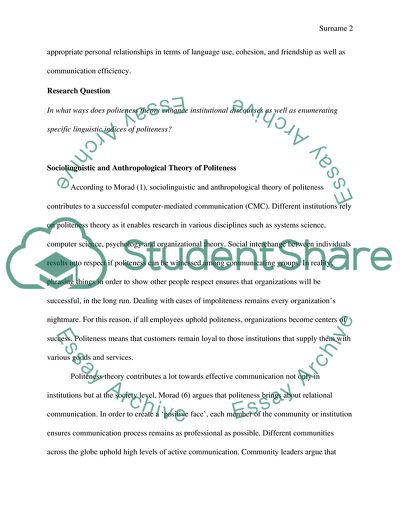Cite this document
(Politeness Theory Research Paper Example | Topics and Well Written Essays - 2000 words, n.d.)
Politeness Theory Research Paper Example | Topics and Well Written Essays - 2000 words. https://studentshare.org/humanitarian/1856993-politeness-theory
Politeness Theory Research Paper Example | Topics and Well Written Essays - 2000 words. https://studentshare.org/humanitarian/1856993-politeness-theory
(Politeness Theory Research Paper Example | Topics and Well Written Essays - 2000 Words)
Politeness Theory Research Paper Example | Topics and Well Written Essays - 2000 Words. https://studentshare.org/humanitarian/1856993-politeness-theory.
Politeness Theory Research Paper Example | Topics and Well Written Essays - 2000 Words. https://studentshare.org/humanitarian/1856993-politeness-theory.
“Politeness Theory Research Paper Example | Topics and Well Written Essays - 2000 Words”. https://studentshare.org/humanitarian/1856993-politeness-theory.


